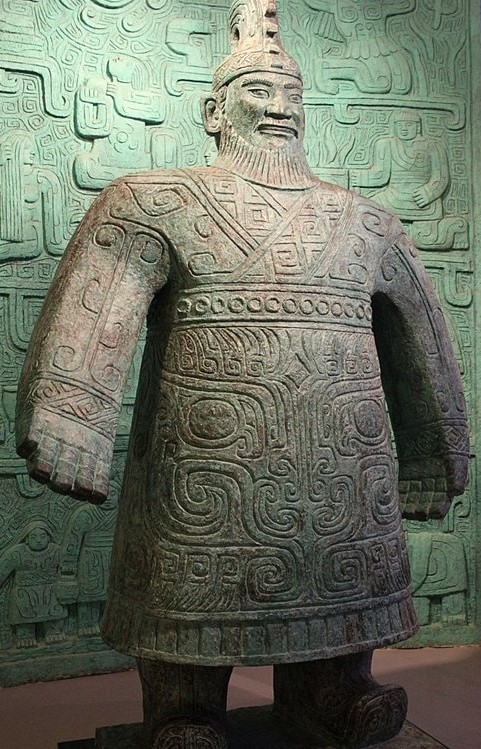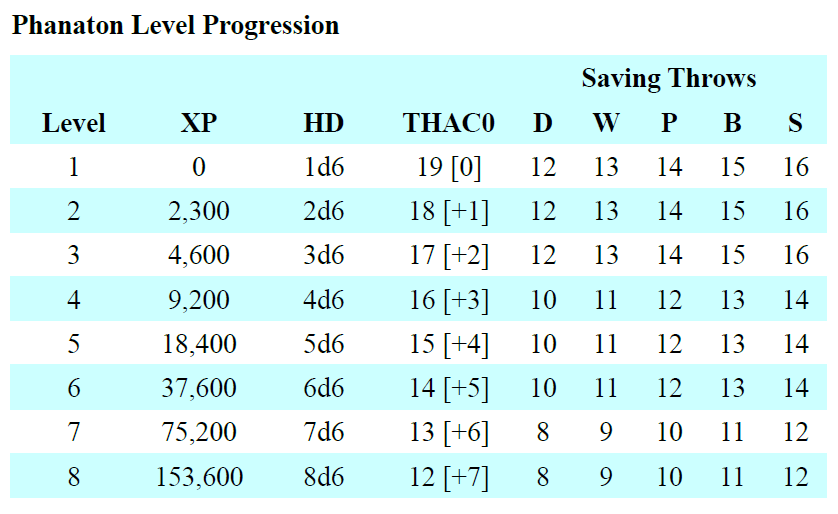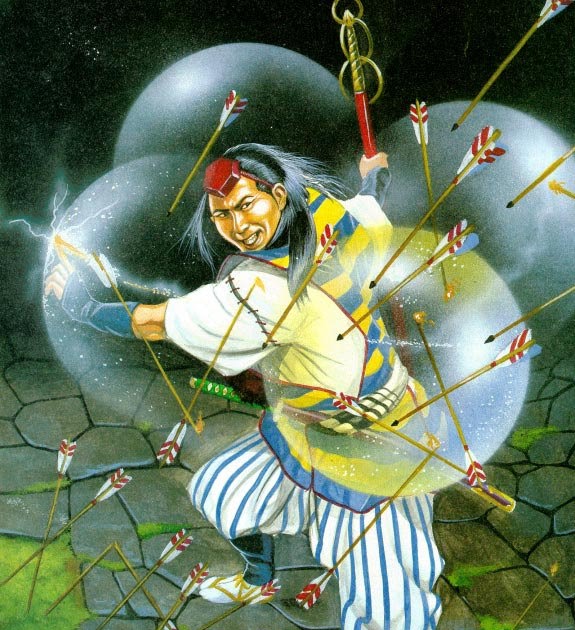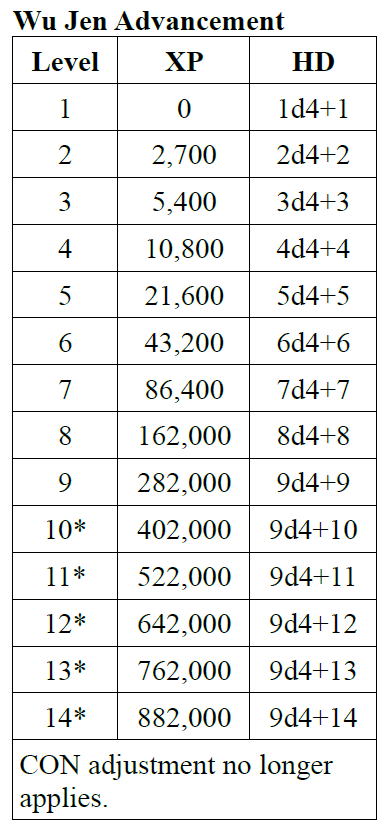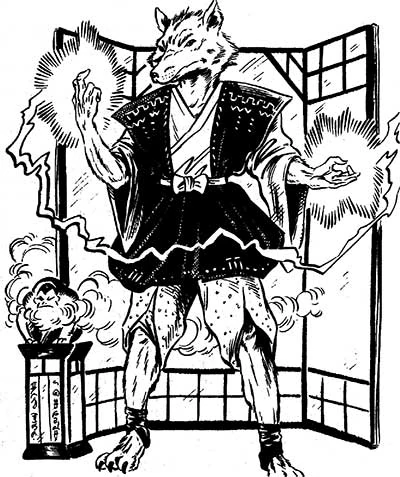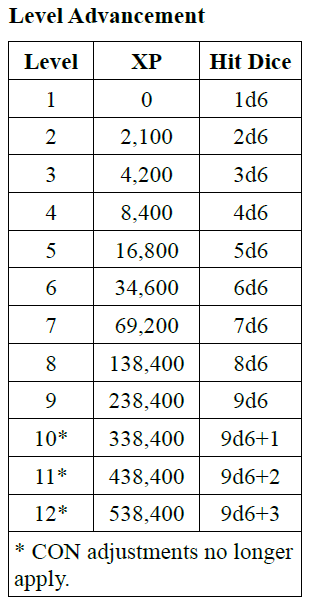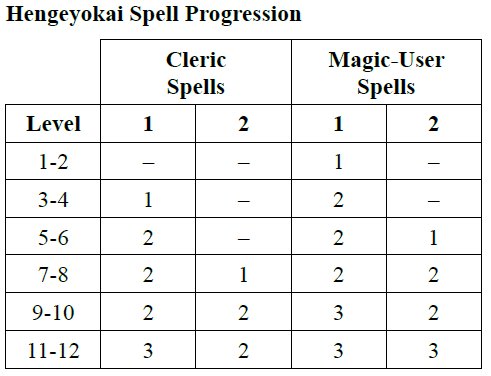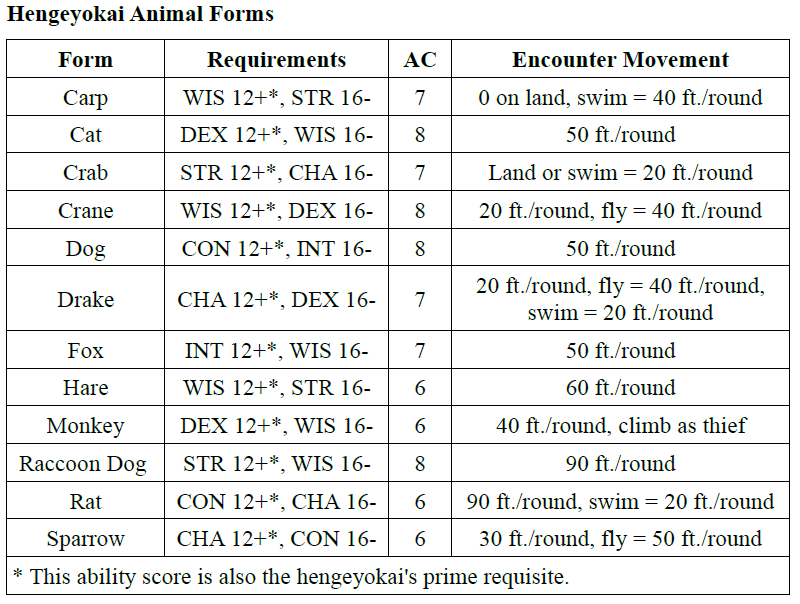Back in June 2021, I mused about how to take OSRIC‘s magic-user and tweak it into the wu jen from TSR’s Oriental Adventures. That effort (which you can read here) focused on alternative class features rather than putting in the time needed to create a new list of spells for a new type of magic-user.
Today, I’m once more whipping out Erin D. Smale’s BX Options: Class Builder and crafting an entire wu jen class. Since the wu jen has some quirks that didn’t quite fit the BXO:CB’s parameters, I had to make educated guesses at some of the XP costs for certain class abilities.
Nota Bene: Those previous links are affiliate links. If you click and purchase, I get a few coppers. Also, much of the class description below comes from Oriental Adventures after some minor editing.
Wu Jen
Wu jen are sorcerers, people of mysterious of powers, who command the elemental forces of magic. They seldom live with the rest of human society, preferring to be hermits who live in wild places where they can purify their bodies and minds. Wu jen learn spells from spirits and other supernatural powers.
Requirements: Minimum Intelligence 13, cannot be Lawful
Prime Requisite: INT
Hit Dice: 1d4+1
Maximum Level: 14
Armor and Shields: None
Weapons: Club, blowpipe, dagger, short bow, short sword, shuriken, sling
Languages: Alignment, Oni, Tengu, Trade Tongue
Restrictions
Stronghold: When wu jen reach 11th level, they may build strongholds.
Taboos: Since wu jen draw their power from supernatural sources, they must operate under special taboos which might seem silly to others. These taboos are important to wu jen, for wu jen who violate their taboos (willingly or otherwise) lose the ability to cast the highest level of spell they have access to for each violated taboo. So, a 6th-level wu jen (able to cast up to 3rd-level spells) who violates two taboos can cast only 1st-level spells. The typical period of spell ability loss is one day per violated taboo. A wu jen has one taboo at 1st-level and gains one more taboo at levels 5 and 10. Some possible taboos are suggested below:
- Cannot eat meat
- Cannot have more treasure than can be carried
- Must make a daily offering (of food, flowers, incense, et cetera) to the spirits
- Cannot bathe
- Cannot cut one’s hair
- Cannot drink alcohol
- Cannot wear a certain color
- Cannot light a fire
- Cannot sit facing a particular cardinal direction
Abilities
Combat: Wu jen make attacks and saving throws as magic-users. At 1st level, wu jen select one weapon from the list above. The wu jen gains a +1 “to hit” bonus with the chosen weapon.
Elemental Spells: The elements are earth (including metal), water, fire, air, and wood. A wu jen’s spells do not have defined sources related to their effects. In other words, a magic missile is not “a magical energy dart”. A lightning bolt is not “a bolt of lightning” nor is a stinking cloud “a nauseating cloud of vapors”. Wu jen determine the elemental manifestation of their spells when they casts them. This might modify the effects of the spell, as determined by the DM, but much of the time the effects are cosmetic.
At 1st level, a wu jen selects one element to become keyed with, but he has knowledge of the other four. When wu jen memorize their spells, they assign an element to each spell. This helps determine the effects of the spell when it is cast. Once per day at 1st level, a wu jen may invest a spell with additional power if that spell has a keyed element. Doing so has one of the following effects (chosen by the wu jen):
- The wu jen may cast the spell without having to speak or gesture.
- The spell’s range and duration are increased by 25%. This does not apply to a range of 0 or to durations of instantaneous or permanent.
- Saving throws against the spell are made with a -1 penalty.
- For effects not related to range and duration, the spell takes effect as if the wu jen’s caster level were one higher.
When wu jen gain access to a new level of spells, they gain another daily use of this keyed element ability. At 3rd, 5th, 8th, and 11th levels, wu jen add another key element to their repretoire. Thus, by 11th level, a wu jen has mastered all five elements.
Ki: Wu jen practice strict mental training. Once per day at 1st level, wu jen may tap into their ki to gain a +3 bonus to initiative. This may be declared after initiative has been rolled. Once per day at 4th level, wu jen may tap into their ki when casting a spell that is three or more levels lower than the wu jen’s level. The wu jen does not lose memorization of the spell after casting it.
Magical Research: Wu jen may research new spells. At 9th level, wu jen may create magic items and research magical effects.
Meditation: Meditation is a deep state of concentration. One hour of uninterrupted meditation is as restful as two hours of sleep. While meditating, wu jen are oblivious to hunger, thirst, and weather. They are still conscious while meditating, aware of their surroundings, and thus are not any easier to surprise or slower to react to danger.
Spell Casting: Wu jen learn and prepare spells like magic-users, to include keeping spellbooks. They have the same spells per day as magic-users.
Unnatural Commerce: Wu jen often have dealings with tengu and oni. They gain a +1 reaction modifier when dealing with such creatures.
Tags: B/X D&D, Character Classes, Oriental Adventures
